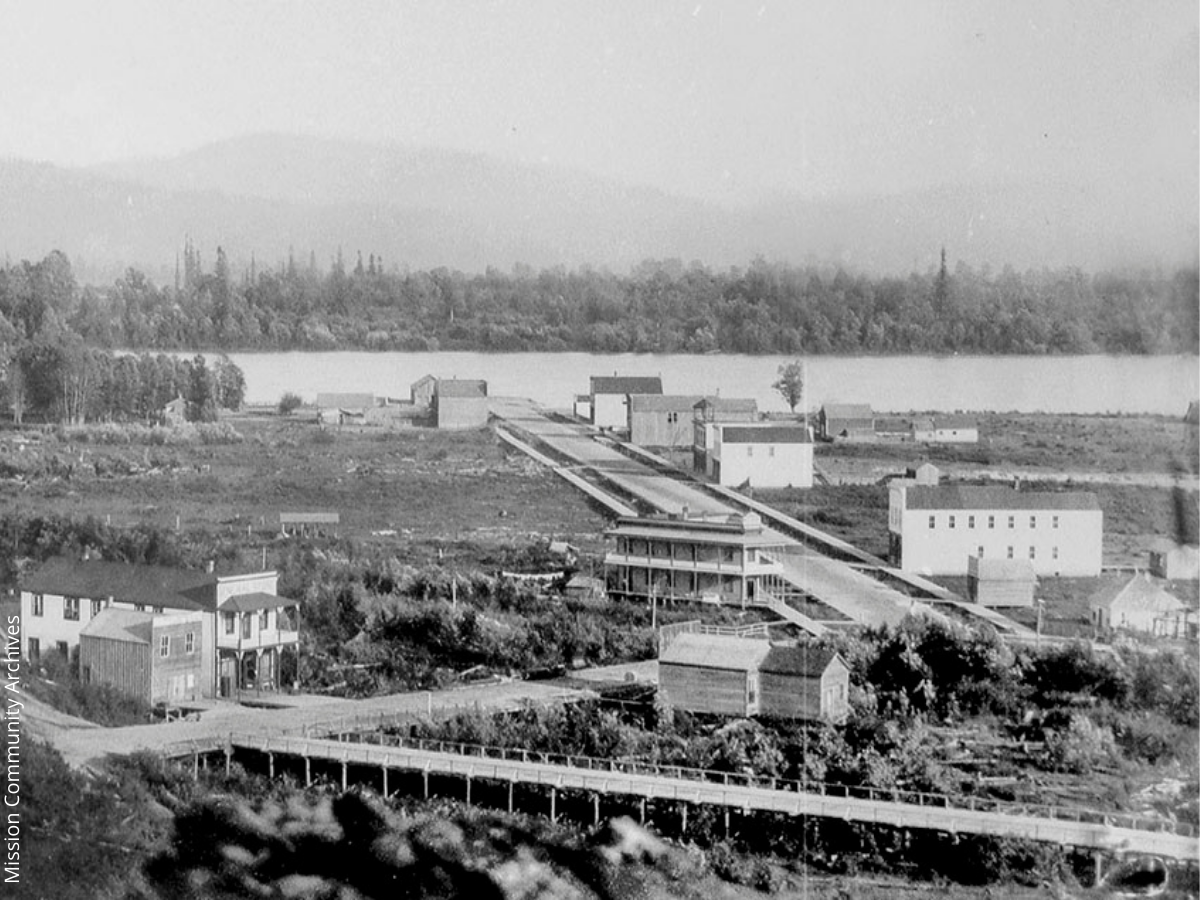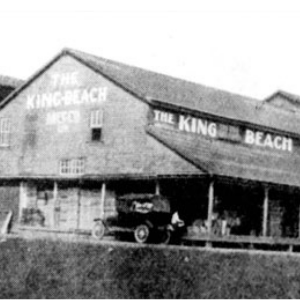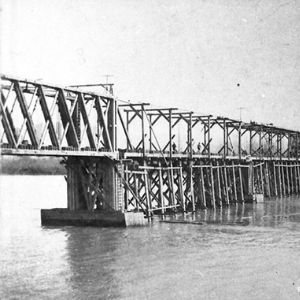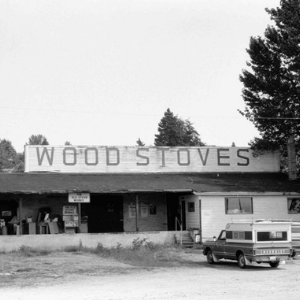Mission Flats
Area description
The area south of the CPR tracks is the oldest part of old Mission City. Situated on the flat plain beside the Fraser River, it seemed in 1890 the ideal place to create a town ̶ especially since a bridge between Abbotsford and Mission was very close to completion, and would connect near the main street of the projected town. The construction of this street was soon under way (today’s lower Horne Street), and it quickly filled with buildings ̶ hotels, a bank, a masonic lodge, a butcher’s, and various others. Enthusiastic investors erected a large fish-curing factory near the waterfront.
But in 1894 came disaster, when a flood of record proportions swept across the flats and through the fledgling town. It wrecked many buildings and inundated the land, undoing all the efforts of the hopeful entrepreneurs. After this revelation of the forces of nature, it was clear that any town centre must be located on higher ground, and accordingly the town gradually shifted northward up the hill and developed on Washington Street ̶ today’s First Avenue.
Little trace of the old town remains, but a secondary commercial centre has grown up in its place. The largest hotel survived the flood, being on slightly higher ground near the CPR station, and other buildings were repaired sufficiently to be re-used. For some years Horne Street became a small Chinatown with hotel and stores, but this was wiped out by a fire in 1924. The big hotel also burned that year in a separate fire. The 1893 fish-curing factory (which never opened) was used for the Agricultural Fair for many years until it was taken over by a creamery and then by fruit-processing operations. Not much of it survived some general demolition on the site in 1973. Probably the oldest building left in lower Mission today is the Old Stove Works, once used for fruit storage and dating to about 1923.





